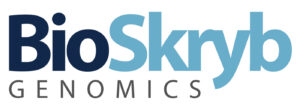Life Sciences
The Time Is Right for Single-Cell Genomics: Next-Generation Sequencing Has Enabled the Single-Cell Multiomics Revolution
Sponsored content brought to you by By Jay AA West, PhD There is a revolution taking place in the field of genomics. Next-generation sequencing (NGS)…

Sponsored content brought to you by
By Jay AA West, PhD
There is a revolution taking place in the field of genomics. Next-generation sequencing (NGS) is getting faster and less expensive with better computational tools, enabling researchers to sequence more samples and analyze sequencing data more quickly. Coupled with improvements in chemistries for single-cell DNA and RNA sequencing, investigators can now obtain meaningful results from an individual cell. Single-cell-level data is particularly important as we are rapidly approaching the limits of bulk sequencing in understanding the contribution of somatic mutations to complex disease, like cancer and Alzheimer’s.
Over the past two decades, somatic mutations in the human genome have been cataloged by bulk sequencing, that is, by analyzing thousands of cells as a pool. However, bulk sequencing misses rare mutations that are present in individual cells of a tissue or tumor. Similarly, bulk sequencing cannot accurately determine whether mutations exist in the same cell. Both scenarios can present a problem in cancer research and clinical practice, where rare clones or specific combinations of mutations can support the emergence of therapy-resistant phenotypes.
Single-cell NGS, on the other hand, increases the resolution to decode the variations in the genomes of single cells. By examining single cells, researchers and clinicians can ascertain the concomitant genetic events that support tumorigenesis and therapeutic resistance. These discoveries are driving novel biological insights and delivering a more complete understanding of the relationship between genes and disease, increasing our knowledge of complex diseases, and driving the development of more precise treatments. But what technical innovations are necessary to enable single-cell whole genome sequencing at scale?

A foundational need for single-cell genomics is an accurate and precise method for whole genome amplification. BioSkryb Genomics’ primary template-directed amplification (PTA), a new method for whole genome amplification found in ResolveDNA®, enables whole genome sequencing at the single-cell level. Moreover, with its ResolveOME technology, BioSkryb amplifies the genome and transcriptome from the same cell simultaneously, resulting in unprecedented mechanistic insight between genomic structure and gene expression in an individual cell. These revolutionary chemistries enable single-cell genomic and transcriptomic analysis, but additional innovations that decrease sequencing costs and increase analytical capabilities are also necessary.
Decreasing sequencing costs have required the development of new NGS technologies. Just five years ago, the cost to sequence one individual cell was around $1,300,1 making it financially unfeasible for patients and clinicians alike. Today, sequencing a single cell costs about $400, and this cost is expected to drop to below $50 over the next few years. Exome or panel sequencing can also further decrease costs. Lower sequencing costs make research and testing more accessible by increasing the number of samples that can be analyzed.
With larger numbers of samples analyzed, there has also been a need to create new methodologies to increase computing power. With some 3.2 billion base pairs in the human genome, switching to GPUs (Graphics Processing Units) from CPUs (Central Processing Units) has enabled enhanced visualization of data to be processed more quickly. The cost to run data analysis was also drastically reduced from $40 per genome to sometimes less than $1. These developments have made the analysis of many genomes simultaneously possible, but new computational tools are also necessary to analyze increasingly complex data.
The final critical innovation that enabled single-cell genomics is the development of new computational tools created to analyze single-cell data. However, these can be difficult to use and rely on bioinformaticians. To empower scientists to explore and analyze their data more quickly, BioSkryb created BaseJumper, a bioinformatics platform designed with biologists in mind. Furthermore, because BaseJumper is a cloud-based platform, users bypass the need for large computational requirements.
We are rapidly approaching the tipping point, where the next great questions in biology and medicine will not be answered by bulk sequencing but rather by careful analysis of individual cells from healthy and diseased tissue. Novel chemistries, decreasing sequencing costs, and improved computational approaches are making single-cell genomics feasible and accessible. The next revolution of single-cell biology is upon us and is primed to drive discovery research, translational diagnostic insights, and drug development for decades to come.
Reference
- Wetterstrand KA. DNA Sequencing Costs: Data from the NHGRI Genome Sequencing Program (GSP). Accessed: March 22, 2023.
Jay AA West, PhD, is the co-founder and CTO of BioSkryb Genomics.

With its novel combination of single-cell methods, BioSkryb Genomics is unlocking a deeper understanding of tissue health. To learn more, visit www.bioskryb.com
The post The Time Is Right for Single-Cell Genomics: Next-Generation Sequencing Has Enabled the Single-Cell Multiomics Revolution appeared first on GEN – Genetic Engineering and Biotechnology News.

Wittiest stocks:: Avalo Therapeutics Inc (NASDAQ:AVTX 0.00%), Nokia Corp ADR (NYSE:NOK 0.90%)
There are two main reasons why moving averages are useful in forex trading: moving averages help traders define trend recognize changes in trend. Now well…
Spellbinding stocks: LumiraDx Limited (NASDAQ:LMDX 4.62%), Transocean Ltd (NYSE:RIG -2.67%)
There are two main reasons why moving averages are useful in forex trading: moving averages help traders define trend recognize changes in trend. Now well…
Asian Fund for Cancer Research announces Degron Therapeutics as the 2023 BRACE Award Venture Competition Winner
The Asian Fund for Cancer Research (AFCR) is pleased to announce that Degron Therapeutics was selected as the winner of the 2023 BRACE Award Venture Competition….















